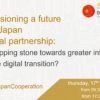It used to be called Web 3.0. Some time ago this became Web3. Its supporters believe that big tech firms like Meta (Facebook) and Google, and governments too, will lose the ability to control (and do business) as it becomes a reality, while empowering users, ordinary members of the public. It may transform the Internet as we know it, making it more decentralised, easier to use and more anonymous. It will strengthen liberal democracy, threatened by the burgeoning surveillance of citizens who have been turned into mere users. For now, however, the hype, the recent fuss, is a project, a utopia, rather than a reality. It remains to be seen whether it will live up to the expectations it has generated, and whether big tech will manage to curb or co-opt it, precisely in order not to lose power and business.
Launched by Tim Berners-Lee in 1989 at the European research organisation CERN, Web 1.0 was decentralised, used open protocols, was read-only, with links (hypertext) that took you to other pages. Web 2.0, as it was called from 1999, involved interactivity and content production such as social media, online banking and video streaming services. Its users were the ones who created value –and benefitted from its ease of use– with their own data, as were creators, but the companies that dominate the Internet are the ones that take the lion’s share economically, the ones that monetise it.
Web3 will be based on open-source and blockchain technology, the anonymised technology behind cryptocurrencies, hence the enthusiasm in the crypto world. Decentralised applications, or ‘dapps’, which are one aspect of it, may herald a revolution akin to the one unleashed by the Apple Store, when it was launched in 2007 together with its iPhone 1, the first truly smart mobile. Web3 will make communications and transactions more secure, certainly between people (P2P), and do more to protect privacy.
It may, however, entail greater electricity consumption (and more greenhouse gases if such power is not drawn from renewable sources). It will require the painstaking task of labelling dozens of exabytes of existing Web 2.0 content using microdata, for which automation and artificial intelligence will not suffice, meaning in many cases it will have to be done manually; this is an essential chore if everything that Web3 promises is to become reality in terms of being faster and more tuned to users’ interests. To navigate around Web3 it will also be necessary to possess tokens, available to purchase, which could generate even more digital inequalities and divisions.
Web3 will be more semantic, emphasising aspects of meaning, sense and interpretation, whereas Web 1.0 and Web 2.0 (although the latter has made progress in this regard) have been more syntactic, useful for searching for information without interpreting the meaning, as this CEUPE article observes. Indeed, Tim Berners-Lee was already speaking 20 years ago about his vision of Web 3.0 as a ‘Semantic Web’. Behind it of course will be, and already is, artificial intelligence, which will interface with the major networks, the major platforms and the human factor, a novelty in the history of humanity.
With Web3 anyone will be able to become a supplier of services involving enhanced socialisation and a blending of experiences in the real and virtual worlds, something that is basic for the possible metaverse, or rather metaverses, currently being developed. We will all be the owners of what we generate. Since 2019 half of all non-Chinese data traffic on the Internet has gone through Google (Alphabet) –87% of the search engine market– Amazon, Meta (with 3.6 billion people using its Facebook, WhatsApp, Messenger and Instagram platforms), Netflix, Microsoft and Apple. It is thought that Web3 will put an end to these monopolies, although ‘gatekeeper’ companies will continue to exist. It will be possible to access everything with a single username and password, rather than the proliferation we are currently accustomed/forced to accept.
It also remains to be seen what interactions Web3 portends with the Internet of Things (IoT), the Internet of Everything, for which it is set to play a central role, and with the possible metaverses. For now, it is not feasible due to the lack of maturity of 5G networks, insufficient bandwidth and the shortage of technology of broad appeal tailored to all levels of user.
In fact, Web3 has existed in a rudimentary form for at least the past five years. The expression dates back to 2014 when the person who coined the term, Gavin Wood, based it on Ethereum (a digital platform that harnesses blockchain technology for a wide variety of applications), although it has gained importance with blockchain technologies, NFTs (non-fungible tokens, digital certificates that ensure the ownership of a digital asset and prevent it from being counterfeited), new investments and attempts being made in Washington, Beijing and of course Brussels to curb the power of big tech.
It can be based on a network of computers using blockchains, rather than the large data centres owned by giant corporations on which the current internet is based. This is something that may interest countries such as Spain, where large data companies have few installations compared to cooler places, given the high temperatures and the need to consume electricity to refrigerate them.
Gavin Wood, now in charge of the Web3 Foundation, argues in a recent Wired interview that decentralised technologies represent the only hope for safeguarding liberal democracies from the power of big tech as well as states and governments themselves (something Edward Snowden highlighted with his revelations about the surveillance state that is the US –not to mention China– and Shoshana Zuboff has referred to as surveillance capitalism). For Gavin Wood, ‘Web3 is actually much more of a larger sociopolitical movement that is moving away from arbitrary authorities into a much more rationally based liberal model. And this is the only way I can see of safeguarding the liberal world, the life that we have come to enjoy over the last 70 years’.
The goal is to salvage the liberal dream the Internet was originally supposed to represent. It remains to be seen whether the instrument is in fact Web3.
Image: People walking on a walkalator. Photo: David Yu



